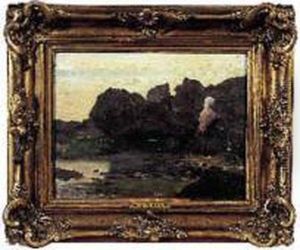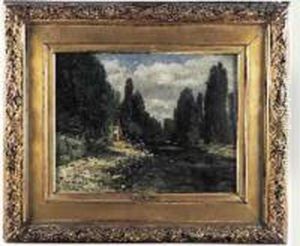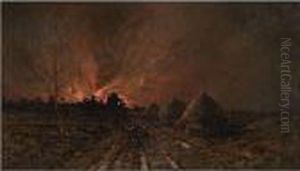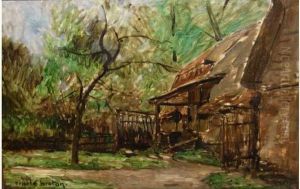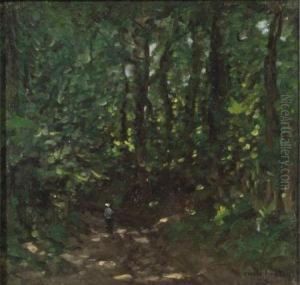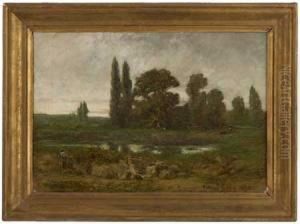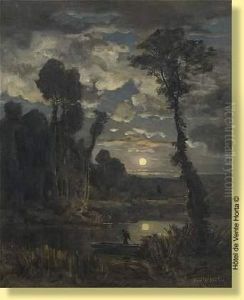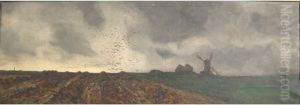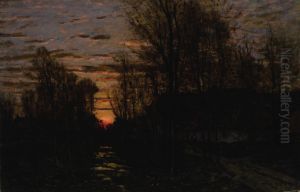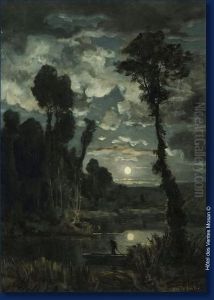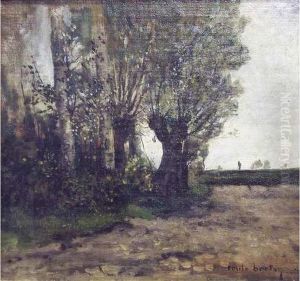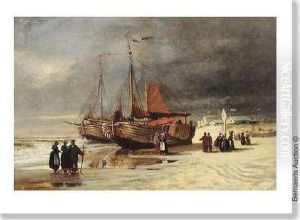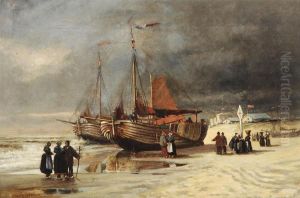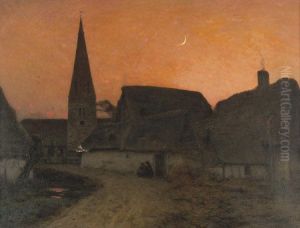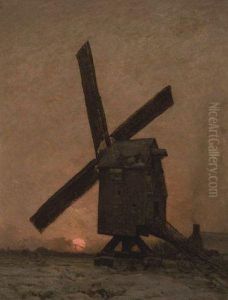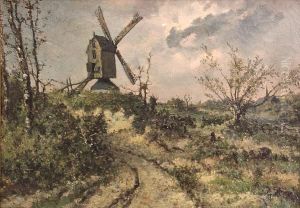Emile Breton Paintings
Émile Breton was a notable French landscape painter, born in Courrières, a small town in the Pas-de-Calais, France, in 1831. He was part of the Breton family, which included his brother Jules Breton, a famous painter known for his scenes of peasant life. Émile's works, however, were distinct in their focus on landscapes, often capturing the serene and picturesque rural landscapes of France.
Émile Breton's journey into art began under the guidance of his brother Jules, who was his mentor and introduced him to the world of painting. Despite living in the shadow of his brother's fame, Émile developed a unique style characterized by a delicate handling of light and a profound sense of tranquility in his landscapes. His works often depicted the countryside around Courrières and the northern regions of France, areas known for their natural beauty.
Throughout his career, Émile Breton exhibited his works in various salons and exhibitions, gradually earning recognition for his contributions to French landscape painting. His paintings were appreciated for their realism, attention to detail, and the peacefulness they evoked, distinguishing him as a significant figure in the landscape genre of the 19th century.
Beyond his achievements in painting, Émile Breton's life was marked by his dedication to capturing the essence of the French countryside, a theme that remained constant throughout his work. He was deeply influenced by the Barbizon school, a movement that emphasized the beauty of nature and the importance of depicting it with emotional depth and realism. Breton's adherence to these principles is evident in his meticulous landscapes, which continue to be celebrated for their beauty and technical skill.
Émile Breton passed away in 1902, leaving behind a legacy of serene and meticulously crafted landscapes that have secured his place in the annals of French art history. His works remain a testament to his passion for the natural world and his skill in portraying its quiet majesty. Despite living in a period dominated by the Impressionist movement, Breton's dedication to traditional landscape painting demonstrated his commitment to a genre that he helped to define and elevate.
